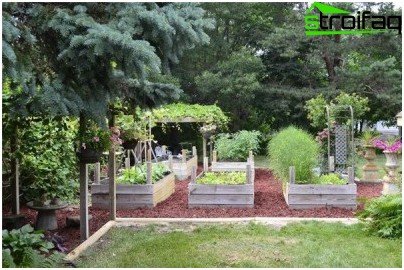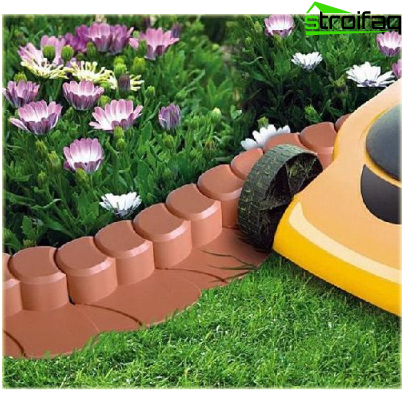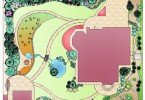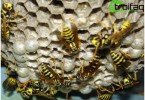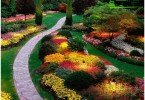Do you think that fencing for beds is a long bygone past? You are deeply mistaken! Even those summer residents who once abandoned these elements, eventually felt their absence and again returned to their beds and beds. Why do you think?
Content
- Practical need
- Types of decorative fencing
Practical need
- First and foremost, they create the added convenience needed to grow crops. Often garden and ornamental crops require a greater depth of soil than is necessary for a conventional lawn. And really, what is easier to sprinkle the earth or dig clay or sandy soil in depth? Of course, the first!
- Secondly, at the highest flower beds and beds, weeds grow less. Therefore, they are easier to handle. In this case, the lawn will not step on the flower garden and encroach on the territory that belongs to your favorite roses and lilies.
- Thirdly, when the time comes to mow the grass, you will not harm the crops planted on the beds and flower beds.
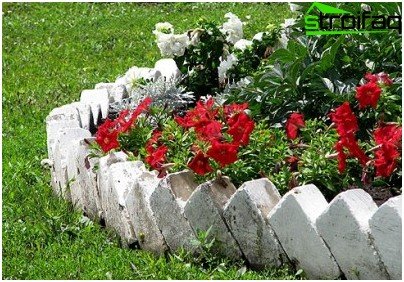
Such flower beds are familiar to many since childhood.
Types of decorative fencing
After making sure that this element is necessary, it is worth remembering what it can be? Summer residents of Soviet times used old boards to fence the beds, and flowerbeds were lined with bricks or stones. Today, there are much more opportunities for garden design. Many natural and artificial materials act as fences..
- A rock
The advantage of this material lies in its durability. Stones are easy to process and therefore they can be given the necessary shape. For curbs, both natural stones and artificial ones are used. The disadvantage of such a fence is the property of stones to sink into the ground over time. Therefore, they will have to get out, sprinkle the earth and restore the boundaries of the beds.
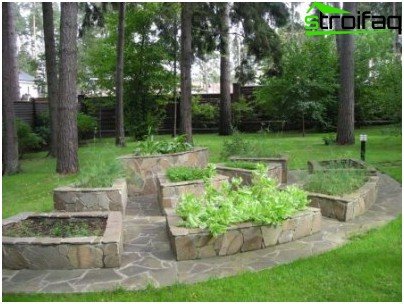
Natural stone in perfect harmony with any design decisions on your site
- Curbstone
Compared to ordinary stone, such a fence always has an attractive and neat appearance. The only negative is the high cost of the material, but it pays off for its durability.
- Metal
It is also durable, even though it rusts over the years. It is believed that in plants fenced with metal, roots can freeze in winter. This can be foreseen and corrected – to plant perennial plants, departing from the edge of a flower bed 10 cm, and to plant annual crops along the edges in spring.
What else should I look for when making a metal fence? If its edge is quite sharp, then it will have to be bent or closed. How to do it? In this quality, a plastic pipe cut along the entire length has proven itself.
Speaking of metal, I want to recall the metal barrels that have been successfully used since time immemorial for growing zucchini. Inland, grass for compost is laid, and on top they give a little land. Having planted melons on such beds, you will get a record harvest!
- Slate
Although modern gardeners rarely use it, fencing from slate is quite practical. Compared to metal, the material breaks easily, so you can make a fence of any size, length and shape – in the form of a rhombus, square, triangle, trapezoid (except for a circle or oval). Long sheets of slate are considered more convenient. They are buried in the ground and fixed with pegs. Such a fence is not recommended for vegetable beds, but it is perfect for ornamental plants..
- Wooden fencing
They are very diverse. You can use any option:
- simple boards;
- planed and not planed pegs;
- small stumps (it is better to put them not in the usual way, but cut them in half and put them in a barrel, partially digging them into the ground);
- make wattle;
- to build a miniature fence, etc..
Wood has always been the best material for everything. Garden fencing is no exception
- Plastic fencing
Thinking of how to fence the beds, do not lose sight of modern materials. We are talking about corrugated ribbons, various versions of light fences and dense decorative fences. Dwell on some of them.
- Corrugated tapes are the cheapest way to fence beds and flower beds. They are made quite easily, because they can be cut using a conventional garden pruner and give any necessary shape. Having made such a flower garden, remember this feature when mowing the lawn, since the corrugated tape is well cut by any garden tool …
Such a light and elegant fence, rather, is a warning for children and educated dogs who are forbidden to walk behind the fence. But it does not fit the device of a high garden bed or flowerbed. - Dense decorative fences are very diverse, which, in turn, is reflected in the cost. They can be solid and hollow. The latter are cheaper, but have a drawback. The cavities in the fence can be filled with soil on which grass will grow. To remove it, you will have to disassemble part of the border. Fortunately, this process is not difficult, and therefore it will be quite simple to solve the problem.
Original railing made of modern materials
This is not all types of fences for beds, since each owner can use his own imagination and skill in this matter. The main thing is that they are combined with the general view of the personal plot and be safe during operation. Have a nice summer!


